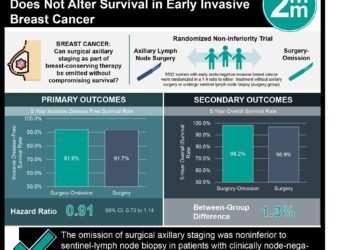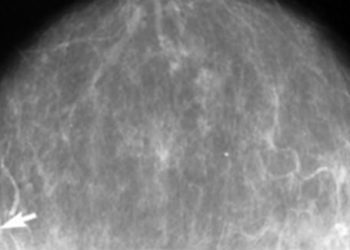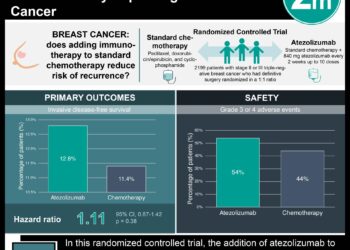Minimal survival benefit from contralateral prophylactic mastectomy
1. In women with newly diagnosed breast cancer, contralateral prophylactic mastectomy conferred a minimal increase in projected life expectancy, between 1 and 7 months.
2. The survival benefit was slightly greater in younger women with stage I, ER-negative breast cancer, however the 20-year overall survival difference was still <1%.
Evidence Rating Level: 1 (Excellent)
Study Rundown: In the United States, women with unilateral breast cancer are increasingly commonly opting to receive contralateral prophylactic mastectomies. The main reason women cite is fear of cancer recurrence in the contralateral breast. However, some experts believe this risk is grossly overestimated. While prior retrospective studies have attempted to evaluate the survival benefit of a contralateral prophylactic mastectomy, they were limited by short follow-up time and selection bias. A recent Cochrane review concluded that there was insufficient evidence to recommend for or against the procedure. Since prospective randomized trials on this subject are ethically difficult, researchers in the present work used a simulated decision-analytic model to project long-term survival outcomes. Results demonstrate minimal survival benefit, an average life expectancy gain ranging from 1 to 7 months. While benefits were greater in younger women with stage I, ER-negative breast cancer, the survival difference after 20 years was still less than 1 percent for all groups of women.
A major strength of this study is that because it was not retrospective, like all prior survival analyses on the topic, results are not limited by selection bias. Limitations include lack of input on quality of life or cost, which play a significant role in not only a woman’s decision to undergo surgery, but also the societal benefit. Additionally, the model only focused on the average woman with breast cancer, and did not take into account other risk factors that may increase a woman’s risk of developing contralateral breast cancer, such as family history and lifestyle factors. Future studies might try to develop a decision analysis model that incorporates not only survival, but also quality of life and cost factors.
Click to read the study in JNCI
Click to read an accompanying editorial in JNCI
Relevant Reading: Perceptions of contralateral breast cancer: an overestimation of risk
In-Depth [simulated decision-analysis]: Researchers used a combination of data from large meta-analyses and the Surveillance, Epidemiology, and End Results (SEER) registry to develop a Markov model that simulated survival outcomes of non-BRCA positive women with newly diagnosed Stage I or II breast cancer. The model, a recursive decision tree, compared women who did and did not undergo contralateral prophylactic mastectomy. Outcomes of life expectancy gain, 20-year survival, and disease-fee survival were stratified by age, cancer stage, and estrogen receptor status.
The average life expectancy gain from contralateral prophylactic mastectomy ranged from 0.13 to 0.59 years for Stage I cancer and 0.08 to 0.29 years for Stage II. For those with Stage I cancer, the absolute 20-year survival difference ranged from 0.56% to 0.94%, while for Stage II the difference ranged from 0.36% to 0.61%. Benefit was greater among younger women, with Stage I, ER-negative breast cancer.
More from this author: SSRI use during pregnancy not associated with fetal, neonatal or infant mortality, IUD contraception equally effective in teenagers as in older women, More US women using emergency contraception, Updated USPSTF guidelines favor treatment of mild gestational diabetes
Image: PD
©2012-2014 2minutemedicine.com. All rights reserved. No works may be reproduced without expressed written consent from 2minutemedicine.com. Disclaimer: We present factual information directly from peer reviewed medical journals. No post should be construed as medical advice and is not intended as such by the authors, editors, staff or by 2minutemedicine.com. PLEASE SEE A HEALTHCARE PROVIDER IN YOUR AREA IF YOU SEEK MEDICAL ADVICE OF ANY SORT.






